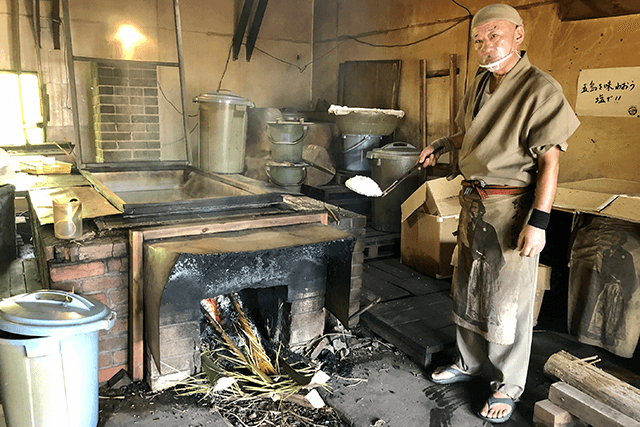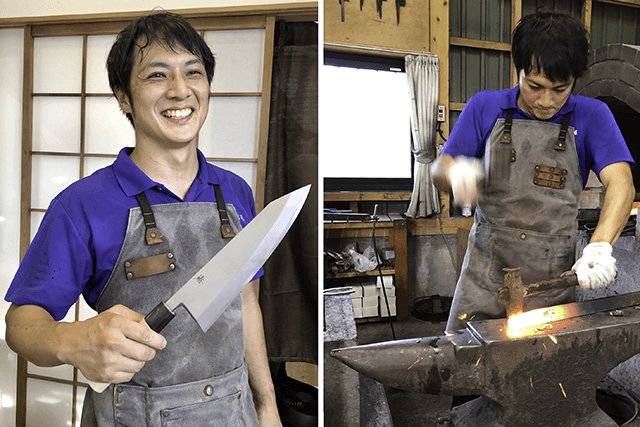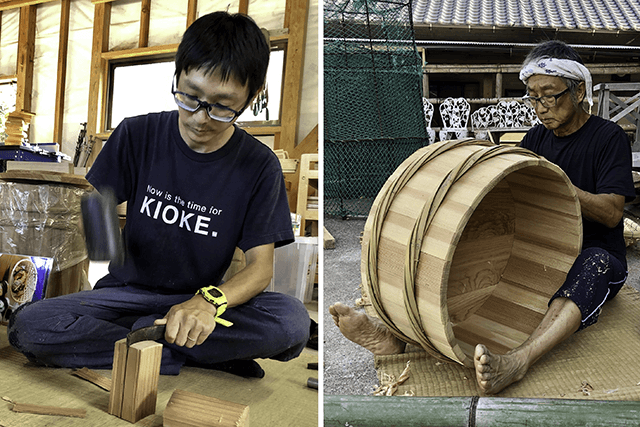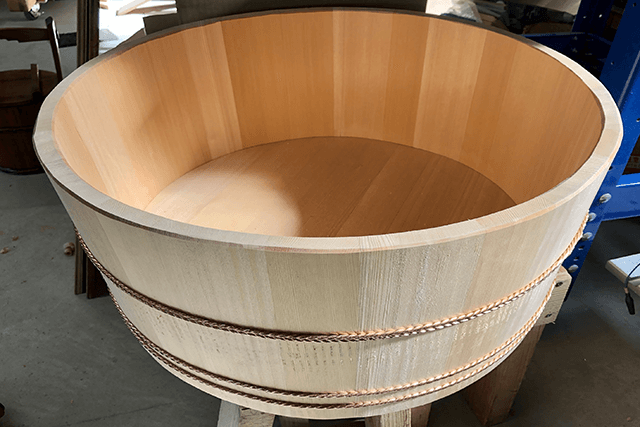
If you like crafts, Japan is a paradise. Just about every corner of the country is home to craftspeople who make fascinating, crush-worthy objects and artisanal food. Fukue Island in the Goto archipelago off Kyushu is known for its community of “hidden” Christians who survived persecution in the Edo period (1603–1867) but it also has a wealth of locally made products whose makers are eager to share their knowledge with visitors.
-
01
Camellia and Sea Salt
Part of Nagasaki Prefecture, Fukue lies off the main island of Kyushu and has a population of about 37,000 people, many of whom are engaged in farming and fishing. Some of the specialties here include Goto beef, boxfish, yellowtail, tuna and kankoromochi, a rice cake mixed with sweet potato. Take a look at the local vegetation, however, and you may spot reddish-pink flowers along the roadside. These are camellia, or tsubaki, which the German botanist Engelbert Kaempfer (1651–1716) described as the “Japan Rose.” The camellia has been cultivated in Japan for centuries and used in products such as camellia tea and camellia oil. At Tsubaki Bussankan, a small collection of crafts and souvenir shops on the south coast of Fukue, visitors can get an up-close look at how camellia nuts are harvested, dried and pressed to make camellia oil, a popular hair product.
Tsubaki Bussan is also home to an artisanal salt workshop of Hitoshi Yamada, a craftsman who makes salt the old fashioned way. In a process that goes back to the 17th century, Yamada eschews modern industrial methods and makes salt entirely by hand.![Hitoshi Yamada, a craftsman who continues to make salt the old-fashioned way]()
Hitoshi Yamada, a craftsman who continues to make salt the old-fashioned way
He begins by using water from the Goto Nada Sea, the body of water between the Goto Islands and the main island of Kyushu. The seawater yields salt that is rich in potassium, magnesium and calcium, all essential minerals for human health. After it is collected from the sea, Yamada broils the seawater in a flat pan and then transfers the brine to a bottle to precipitate the excess calcium. While carefully monitoring the heat, he then allows the solution to form salt crystals, which he gathers up in scoop. Finally, he drains the water and stirs the crystals for the next two to three days while allowing any remaining water to seep out. Yamada proudly shows off the flaky crystals and says that using the wood-fired kiln to make salt results in crystals that are large and sweet.
-
02
The Blacksmith and the Barrel Maker
A short drive north of Tsubaki Bussankan, a side road leads to Miyazaki Kajiya, a blacksmith where things are also done the old fashioned way. Before mass production displaced Japanese blacksmiths in the 20th century, most Japanese knives were handmade. Haruki Miyazaki specializes in handmade knives, and the camellia is his logo, with the kanji character for the flower adorning a chimney above his smithy. After studying under a blacksmith in Fukuoka, Miyazaki decided to set up shop on Goto some 13 years ago to help preserve Japan’s ancient knifemaking traditions.
![Haruki Miyazaki, a blacksmith in Fukue Island]()
Haruki Miyazaki, a blacksmith in Fukue Island
Walking into the forge area, you can see sparks flying as Miyazaki pounds away at his anvil. Because of the manual process, he can only make two or three knives a day. He uses the warikomi process that involves splitting a red-hot piece of iron, inserting a sliver of steel, and forging the two into a single blade. The result is a gleaming, patterned and highly durable kitchen knife. His aim is to combine traditional monozukuri techniques with modern science-backed know-how and produce tools that serve people in their everyday lives.
Miyazaki’s signature knife is the Tsubaki Hocho, a knife forged of carbon steel with an overall Hakata shape, a form handed down from the Edo period. The camelia logo is stamped into the beautifully patterned blade as well as the handle, which can be simple unadorned wood or lacquered and polished with deluxe elements. In addition to stainless steel knives, Miyazaki also specializes in deba fish filleting knives, yanagiba sashimi knives, and santoku general-purpose knives for meat, fish and vegetables. All are works of art.
Miyazaki comes from a family of doctors and craftsmen. His brother Koichi Miyazaki makes traditional wooden pails and barrels known as oke. They are used to hold steamed rice, sushi, miso, noodles, tsukemono preserved vegetables as well as water for baths and hot springs.![Koichi Miyazaki and his father working together to make an “oke” wooden barrel at their workshop]()
Koichi Miyazaki and his father working together to make an “oke” wooden barrel at their workshop
Set amid tranquil woods and rice paddies near the center of Fukue, Koichi’s Okemitsu workshop stands beside a traditional thatched-roof house. The workshop is lined with hand planes big and small, essential tools in milling slats of wood into just the right size so they form a circle when standing up and bound with brass hoops and loops fashioned from split bamboo.
![An Ohitsu Oke, used to keep steamed rice warm and soft]()
An Ohitsu Oke, used to keep steamed rice warm and soft
Oke are not used as much as they once were in Japan, but Koichi wants to convey their value to younger generations. For instance, the ohitsu oke for steamed rice will keep rice warm and preserve its soft texture even when it cools, something modern appliances cannot do. His oke come in various shapes and sizes, including 18-cm cedar ohitsu, 1-sho cedar tubs for sushi, 60-kilogram miso barrels, and 24-cm Japanese cypress bath buckets.
All of the places mentioned above are open to visitors along with a host of other attractions throughout the island. English language information is scarce though, so for up to date information on access and opening times we recommend visiting the Fukue Tourist Information Center when you are on the island or reading up on their somewhat limited English information page here: https://goto.nagasaki-tabinet.com/storage/files/shares/Language/en.pdf





 Go here
Go here





